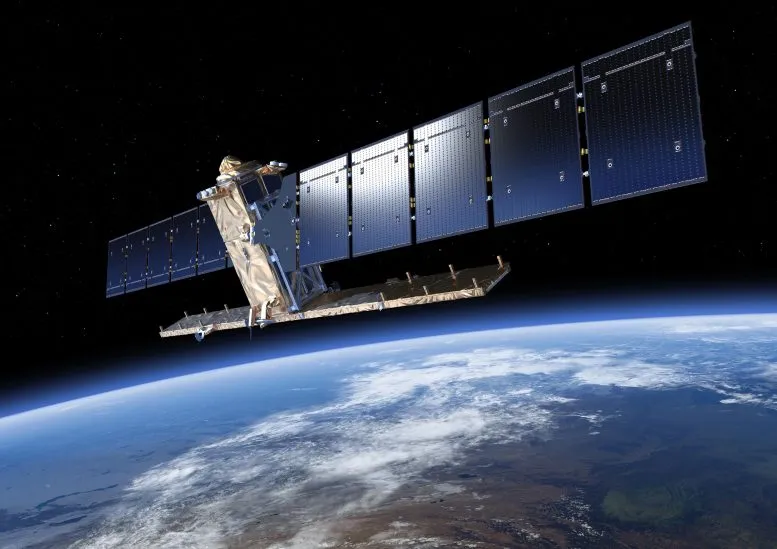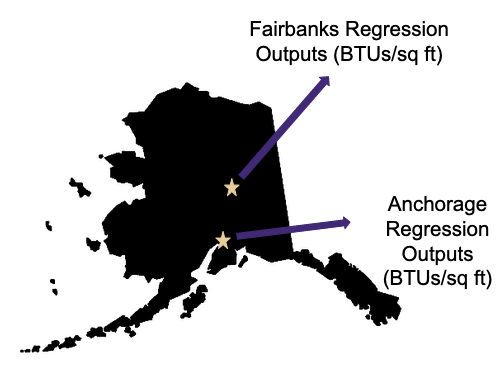Project Pipeline
Our workflow involves using Google Earth Engine’s public data archive to extract tabulated building-level features and then train machine learning models to predict heating loads.

This section describes the following components of our data pipeline.
Data Sources
The sources used to extract building-level attributes and local climate variables were open access and available in Google Earth Engine’s archive. Features developed and their source datasets are:
- Building footprint area
- Building age
- Building height
- Heating and cooling degree days
- Building zip codes
 Photo credit: European Space Agency; Data for this project come from satellites like this one.
Photo credit: European Space Agency; Data for this project come from satellites like this one.
Feature Extraction
The extraction of building features from geospatial data was one of the biggest and most challenging aspects of our project. For this, we used Google Earth Engine which is a cloud computing platform that allows one to access and analyse geospatial big data. The public datasets we used from Google Earth Engine’s archive consisted of satellite images captured across time as well as geometries of building outlines in Alaska. We had to aggregate these data both temporally and spatially to arrive at building level features and then export these as tabular data for analysis.
Optimizing Data Exports
Each building had to be matched to its area’s zip code and then building information was exported in batches of zip code groups.
Model Estimation

With data on building features, climate, and simulated data on heating loads in Anchorage and Fairbanks, we estimate a supervised learning model that can predict heating loads at the building level across the rest of Alaska’s Railbelt.
We explored a range of models including ordinary least squares linear regression, ridge regressions with and without polynomial features, decision trees, and random forests. We evaluated these models using their mean squared error (MSE) on the test data. Model MSEs are listed below: errors decrease from top to bottom, with the Random Forest Regression performing the best.
 We are yet to explore a wide range of models, but will have the opportunity to do so as we gain access to a more comprehensive heating loads database from the Alaska Housing Finance Corporation, due to be made public this year.
We are yet to explore a wide range of models, but will have the opportunity to do so as we gain access to a more comprehensive heating loads database from the Alaska Housing Finance Corporation, due to be made public this year.